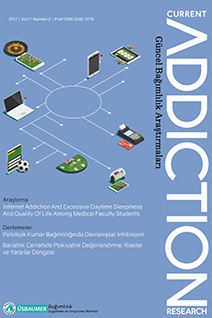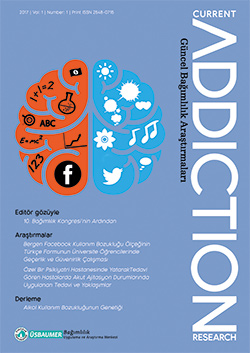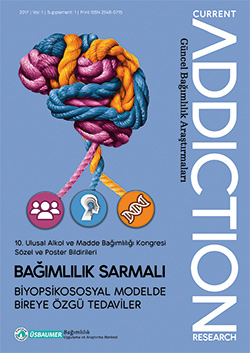Years
2025
2024
2023
2022
2021
2020
2019
2018
2017
Categories
Authors
- ALEJANDRO BORREGO-RUIZ (1)
- AYŞEGÜL DUMAN (1)
- Abdullah TÜRKMEN (1)
- Ahmet Tamer AKER (1)
- Ahmet Yılmaz (1)
- Ahmet Üzer (1)
- Ali Yasin Kafes (1)
- Ali Yücel GÜLER (1)
- Alptekin ÇETİN (1)
- Alptekin Çetin (1)
- Altunışık Toplu Sibel (1)
- Aslı Enez Darçın (1)
- Aslı Kayacan (1)
- Aslı Zeynep Başabak Bhais (1)
- Aslıhan Polat (1)
- Aybüke Kaplan (1)
- Ayşegül Tosuner (1)
- Azize TÜRKOĞLU (1)
- Başak Ünübol (1)
- Berhudan Şamar (1)
- Beyza Yaz (1)
- Birgul Kekliltepe (1)
- Birgül CUMURCU Hatice (1)
- Birgül Cumurcu Hatice (1)
- Bolat Kaya Özlem (1)
- Burcu YÜCETÜRK (1)
- Bülent COŞKUN (1)
- Caner ASLAN (1)
- Cemal Onur NOYAN (4)
- Cemal Onur Noyan (4)
- Ceren GÜNGÖR (1)
- Ceyda ŞİŞMAN ÜNLÜ (1)
- Ceylan Ergül Arslan (2)
- Cihat Paltun Salih (1)
- DURMUŞ ELİF (1)
- Davut Genç (1)
- Deniz Doğan (1)
- Deniz Eryılmaz (1)
- Derya Gündüz Hoşgör (1)
- Didem Beşikçi Keleş (1)
- Dilan Erkan (1)
- Duygu KILIÇ ÖZTAN (1)
- EMLU HAKAN (1)
- Eda Deligöz (1)
- Ekin Sönmez Güngör (1)
- Elif Mutlu (1)
- Erkal ERZİNCAN (1)
- Erkal Erzincan (2)
- Erol Göka (1)
- Fagan Zakirov (1)
- Fatma Betül Esen (1)
- Fatma Eren (2)
- Feyza ÇELİK (1)
- Filiz Özsoy (1)
- FİDAN ENİSE KÜBRA (1)
- Gizem Akülker (1)
- Gul Eryılmaz (1)
- Gökben Hızlı Sayar (3)
- Gül ERYILMAZ (4)
- Gül Eryılmaz (2)
- Gürler GÜZ (1)
- Gürler Güz (1)
- HANDE TUĞÇE DEMİRCİ (1)
- HATİCE OKSAL (1)
- Habib Erensoy (1)
- Hasan Kaya (4)
- Hasan Mervan Aytaç (1)
- Hatice Turan (2)
- Hatice Özyıldız Güz (1)
- Haydar Hoşgör (1)
- Hüseyin Ünübol (2)
- HİLAL ÇERKEZOĞLU (1)
- Hızlı Sayar Gökben (1)
- Işıl Gogcegoz (2)
- Işıl GÖĞCEGÖZ (1)
- Işıl Göğcegöz (2)
- KABA AYŞE (1)
- KABA FATİH (1)
- KARABURUN MERVE (1)
- Kursad Nuri Baydili (1)
- Lütfiye Nur Akkoç Arabacı (1)
- Melike Yerebakan Tüzer (1)
- Merve Metin (1)
- Meryem Zeynep Uğurlu (1)
- Mine Ergelen (1)
- Murat Yalçın (1)
- Mustafa AKAN (1)
- Mustafa Akan (1)
- Müberra Kulu (1)
- Nermin GÜNDÜZ (2)
- Nermin Gündüz (2)
- Nesrin Dilbaz (5)
- Nevzat Tarhan (1)
- Nilüfer SAATCİOĞLU TINKIR (2)
- Nisanur Sarıgül (1)
- Nuran Korkmaz (1)
- Onur Gökçen (1)
- Rüstem Mustafaoğlu (1)
- SALİH GÜLEN (1)
- Salih Cihat Paltun (1)
- Sedef KOÇ BAL (1)
- Selami Ülker (1)
- Sema AKKOYUN (1)
- Serdar Nurmedov (2)
- Sever Yıldırım (1)
- Sevinç Sütlü (1)
- Simge ALEVSAÇANLAR CÜCÜ (2)
- Sümeyra Bilgiç (1)
- Tijen Acar (1)
- Tijen ŞENGEZER (1)
- Tijen Şengezer (1)
- Tonguç Demir Berkol (1)
- Tuba Öcek Baş (1)
- Tuğba Yılmaz (1)
- Türker Tekin Ergüzel (1)
- Yasin Hasan Balcıoğlu (1)
- Zakirov Fagan (1)
- Zehra Arıkan (1)
- Zeynep Ülke (1)
- Zeynep Şahin (1)
- Zühal Albayrak (1)
- Çağrı Yalçın Çınar (1)
- Çelik Hüseyin (1)
- Çetin Alptekin (1)
- ÖMER BÜBER (1)
- ÖZKAN EZGİ (1)
- Özge Kutlu (1)
- Özge Nur Kutluer (1)
- Özge Timur (1)
- Özlem Bolat Kaya (1)
- İrem Teke Bulut (1)
- Şafak Yalçın Şahiner (1)
- Şule DOYAROĞLU (1)
ARTICLES
Review Article
Sedef KOÇ BAL,Gürler GÜZ,Duygu KILIÇ ÖZTAN
2022, 6(2), s:5-11
Review Article
Aslı Zeynep Başabak Bhais
2022, 6(2), s:12-16
Original Article
Ali Yücel GÜLER,Gül ERYILMAZ,Nilüfer SAATCİOĞLU TINKIR
2022, 6(1), s:5-12
Original Article
Feyza ÇELİK,Ahmet Tamer AKER,Nermin GÜNDÜZ
2022, 6(1), s:13-24
Original Article
Erkal ERZİNCAN,Bülent COŞKUN,Nermin GÜNDÜZ
2022, 6(1), s:25-39
Case Report
Are there any connections between kleptomania and addiction?
Gül ERYILMAZ,Alptekin ÇETİN
2021, 5(2), s:33-34
Kleptomania is a clinical condition in which the desire to steal different objects cannot be inhibited regardless of value. It is classified as “impulse control disorder” in DSM 5. A 24-year-old patient with alcohol use disorder developed kleptomania after successful treatment. In this case, kleptomania can also be evaluated from the perspective of addiction.
Review Article
Tijen ŞENGEZER,Caner ASLAN
2021, 5(2), s:35-42
Original Article
Nilüfer SAATCİOĞLU TINKIR,Gül ERYILMAZ
2021, 5(1), s:5-15
Review Article
Mustafa AKAN,Birgül CUMURCU Hatice
2021, 5(1), s:16-24
Original Article
Sema AKKOYUN,Işıl GÖĞCEGÖZ
2020, 4(2), s:47-53



 2. Sayı
2. Sayı
 1. Sayı
1. Sayı
 Ek Sayı
Ek Sayı







